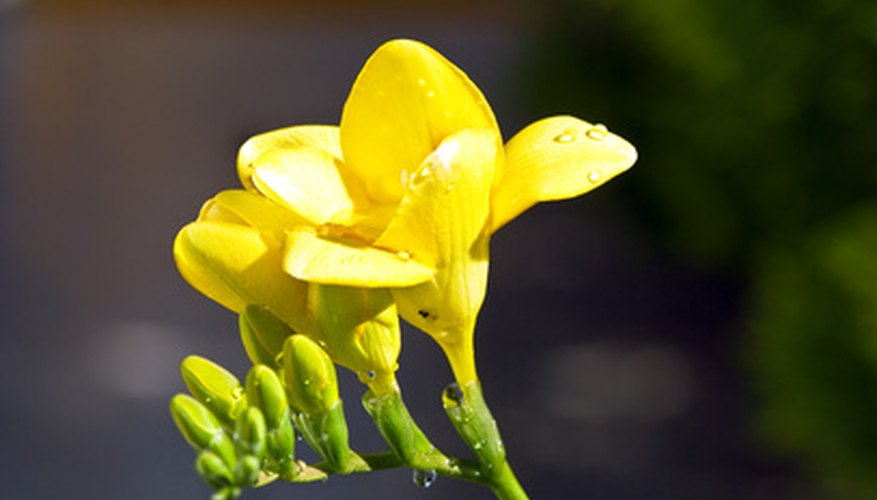Freesias bloom in late spring and early summer, providing a delicate, soft-coloured flower to the early season garden. Often lumped together with spring bulbs such as daffodils, freesias actually grow from a modified bulb structure called a corm and are more closely related to the iris. After the flowers fade, the foliage remains to collect nutrients for the following year's show. Deadheading prevents the freesia from setting seed, so it can store its energy for future blooms instead of wasting it on seed production.
Cut off the flower head after the flower begins to wilt but before the seed begins forming. Remove the flower ¼-inch down the stem, by either pinching it off or with shears.
- Freesias bloom in late spring and early summer, providing a delicate, soft-coloured flower to the early season garden.
- Remove the flower ¼-inch down the stem, by either pinching it off or with shears.
Remove the remaining stem once it begins to dry and shrivel. Cut out the stem at the base where it emerges from the foliage.
Leave the foliage in place until it begins to yellow and die back naturally, which is usually within six to eight weeks after blooming completes. Cut back the foliage to within 2 inches of the ground once it dies back.
TIP
Freesia cannot tolerate frosts, so the corms are usually dug and stored indoors once the foliage dies back.
WARNING
While freesia does produce viable seed, it rarely produce plants that bloom well or look like the parent. The seedlings are also weedy, growing up in neighbouring beds where they are unwanted.
